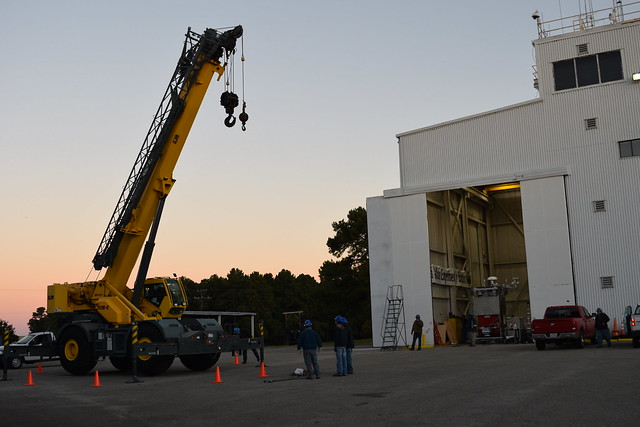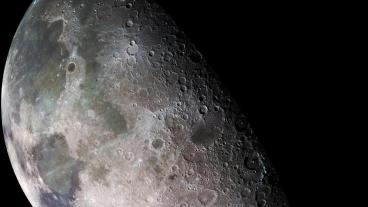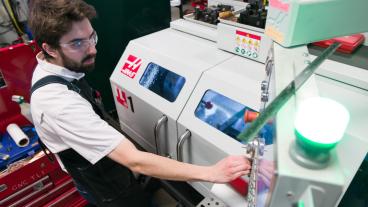A space observatory assembled at Colorado School of Mines by Mines faculty and students and members of the international EUSO collaboration will launch from New Zealand in March 2017 and fly at 110,000 feet, making the first fluorescence observations of high-energy cosmic ray extensive air showers from above by looking down on the Earth’s atmosphere from near space.
Undergraduate and graduate students, overseen by Physics Professor Lawrence Wiencke, assembled the gondola that will hold the instrumentation, which includes a photon detection module and an optical telescope, and integrated these instruments to allow the transmission of data. The observatory has since passed compatibility and hang tests at NASA’s scientific balloon facility in Palestine, Texas, and will be shipped to Wanaka, New Zealand, on December 2.
“It’s quite a story that is still unfolding,” said Wiencke, deputy principal investigator for the project, which is led by Angela Olinto of the University of Chicago. Eight countries are represented in the project, with collaborators traveling to Golden from France, Germany, Italy, Poland and Mexico, said Wiencke, “and the subatomic group at Mines has a lead role.” The custom lenses, for example, were sent to Mines by colleagues in Japan.
The Mines team includes undergraduate student Rachel Gregg, PhD candidate Johannes Eser, postdoctoral researcher Simon Bacholle, and machine shop manager and instructor Randy Bachman, all in the Physics Department.
From Palestine, the instrument will be shipped from the Port of Houston to the Atlantic side of the Panama Canal. It will be unloaded and moved by rail to the Pacific side, then placed on another ship traveling to New Zealand. The journey is expected to take about two months.
The flight could last as long as 100 days, circling the Earth above the Southern Ocean multiple times and collecting data at night, Wiencke said. The super pressure balloon expands to a volume of 18 million cubic feet in flight and can lift up to 5,000 pounds.
“The origin of the highest energy subatomic particles known to exist in the universe remains an open question, as do the acceleration mechanisms of the sources,” Wiencke said. Most of what we know about the universe beyond our solar system has been learned by measuring photons, but cosmic rays have been measured with energies that exceed the highest photon energy measurements by more than six orders of magnitude. This means that extreme energy cosmic rays offer an even larger window into the universe.
In addition to observing and measuring cosmic rays entering the atmosphere, the instrument will also search for ultraviolet signatures from objects such as meteoroids, transient luminous events, photons and neutrinos and even exotic objects such as strange quark matter. The project will also serve as a prototype for future space missions.
Contact:
Mark Ramirez, Communications Manager, College of Applied Science & Engineering | 303-384-2622 | ramirez@mines.edu
Ashley Spurgeon, Editorial Assistant, Mines magazine | 303-273-3959 | aspurgeon@mines.edu




